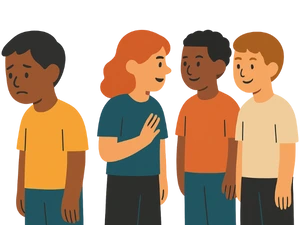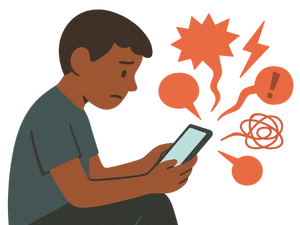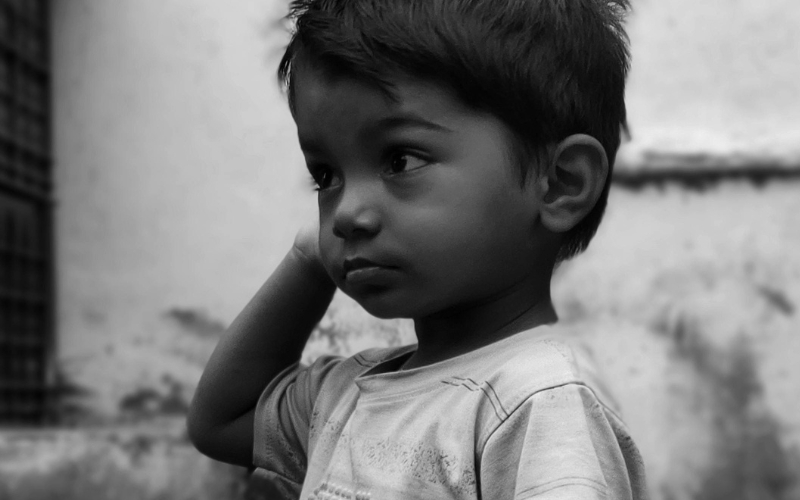Homelessness and poverty are not just economic or housing issues, they are safeguarding concerns that affect the health, development, and wellbeing of children and young people. The government sets out in Keeping Children Safe in Education that being homeless, or at risk of homelessness, presents a real risk to a child’s welfare.
In England, around 30% of children live in poverty, while thousands of families face homelessness or unsuitable housing. Both issues are often interlinked, with one making the other worse. For professionals, educators, and learners on mitskills.com, understanding these challenges is essential to safeguarding practice.

What Do We Mean by Homelessness?
When people think of homelessness, rough sleeping often comes to mind. However, the definition is much broader.
According to Shelter (2022), you count as homeless if you:
Are living rough on the streets.
Are sofa-surfing (staying with friends or family without a permanent place).
Are in temporary accommodation such as a hostel, night shelter, or B&B.
Are squatting (living in a property without legal rights).
Are at risk of violence or abuse in your home.
Are living in poor conditions that affect your health.
Are living in poor conditions that affect your health.
Key Statistics
- Almost 2 million children (1 in 5) are living in overcrowded, unaffordable, or unsuitable homes.
- 124,000 children are living in temporary accommodation.
- 293,000 children are living in homes unsuitable for their health needs.
- 283,000 children are living with their families in other people’s homes because they cannot afford a home of their own.
Homelessness therefore goes far beyond rough sleeping. Many children experience instability, overcrowding, and unsafe environments, even if they technically have a roof over their heads.
What Do We Mean by Poverty?
Poverty is about more than income, it is about daily struggles, insecurity, and constant stress. The Joseph Rowntree Foundation describes poverty as:
“Not being able to pay your rent or mortgage, heat your home, or buy essentials such as food or clothing. It means waking up every day facing insecurity, uncertainty and impossible priority decisions. It means facing marginalisation, discrimination, and constant stress.”
Types of Poverty
Bullying can have devastating and lasting effects on individuals, impacting their learning and mental health. It also affects bullies and bystanders.
Relative poverty
Living in households with income below 60% of the median in that year.
Absolute poverty
Living in households with income below 60% of the median income from a base year (2010/11), adjusted for inflation.
Food poverty
Households that cannot access adequate, nutritious food in socially acceptable ways. In January 2023, 1 in 5 UK households reported skipping meals, going hungry, or not eating for a whole day. Food bank use was significantly higher than before the pandemic.
Fuel poverty
Families unable to heat their homes due to rising energy costs.
Key Statistics
- Around 4.2 million children (30%) in the UK live in poverty.
- Around 3.3 million children live in absolute poverty after housing costs.
- In 2023, 17.7% of UK households experienced food insecurity.
Poverty is widespread and deeply impacts children’s health, education, and life chances.
The Link Between Homelessness and Poverty
Homelessness and poverty are distinct issues but often overlap:
- Families unable to afford rent or mortgages are at risk of losing housing.
- Poverty prevents access to safe, suitable homes.
- Both create stress, instability, and disadvantage for children.
During the cost-of-living crisis, many families are building up rent or mortgage arrears. Eviction and repossession are very real threats, leading to increased family scattering and broken support networks.
Impact on Children and Young People
It is crucial for staff to be aware of the signs of bullying, as children may present differently when experiencing it. These signs can include:
Physical Health and Education
- Tiredness due to poor sleeping arrangements or long journeys to school.
- Hunger and poor diet caused by limited money for food.
- Poor physical health linked to overcrowded, damp, or unsafe housing.
- Difficulty completing homework due to lack of space or quiet.
- Limited access to computers and learning resources.
- Lower educational attainment, in 2022, only 47% of pupils eligible for free school meals achieved a standard pass in English and Maths GCSE, compared to 75% of other pupils.
Mental Health and Emotional Wellbeing
- Stress and anxiety from moving frequently or not knowing where they’ll sleep.
- Poor self-esteem from feeling “different” or singled out.
- Feelings of hopelessness, frustration, and worthlessness.
- Risk of bullying and social isolation.
Family Life and Parenting
- Parents face stress from trying to secure housing and make ends meet.
- This can lead to physical and emotional health problems.
- Pressure can contribute to domestic abuse, emotional harm, or absent parenting.
- Some children take on caring responsibilities if parents are struggling.
Using Maslow’s Hierarchy of Needs, children who lack food, shelter, and safety cannot progress to higher needs such as belonging, esteem, or learning. Their development is therefore at risk.
Risks and Safeguarding Concerns
Children experiencing homelessness and poverty face serious safeguarding concerns:
- Basic needs unmet: food, clothing, heating, or safe shelter.
- Neglect: due to poverty-related challenges.
- Health risks: poor physical and mental health, delayed development.
- Bullying and social isolation.
- Exploitation: criminal, sexual, or labour exploitation may appear to offer a way out.
- Domestic abuse and family stress.
- Substance misuse: by children or parents.
- Educational barriers: low attainment, disengagement, poor attendance.
- Caring responsibilities: children taking on adult roles at home.
These risks mean poverty and homelessness should always be seen through a safeguarding lens.
Recognising the Signs
Many families will not disclose that they are struggling. Educators and professionals must therefore be alert to signs and indicators.
Possible signs of poverty
- Persistent hunger.
- Tiredness and poor concentration.
- Inappropriate or insufficient clothing.
- Lower attainment in school.
- Anxiety, stress, or worry about parents.
- Non-attendance on trips or activities with costs.
- Hopelessness, frustration, or worthlessness.
Possible signs of homelessness
- Frequent lateness or arriving unusually early.
- Carrying multiple bags or belongings.
- Declining academic performance.
- Tiredness, dishevelled appearance.
- Disengagement, withdrawal, or combative behaviour.
- No consistent place to do homework or store school items.

What Can We Do?
Professionals and settings can take the following actions:
- Create and maintain a safeguarding culture: encourage openness, reduce stigma, and make resources visible (posters, leaflets, websites).
- Early identification: notice signs and indicators, and use sensitive enquiry.
- Provide practical support: uniforms, meals, or quiet study spaces.
- Educate about money management: age-appropriate financial skills for young people.
- Support families: offer empathy, not judgment.
- Signpost to services: food banks, housing support, children’s services.
- Safeguarding action: share concerns with DSLs, consider referrals to housing or children’s services. Under the Homelessness Reduction Act 2017, councils must support people at risk of eviction within 8 weeks.
Moving Forward – Why Learning Matters
Homelessness and poverty can feel overwhelming, but awareness and action make a difference. For learners on mitskills.com, your role is not necessarily to solve poverty but to:
- Recognise the signs.
- Create supportive environments.
- Share safeguarding concerns.
- Connect children and families with the right support.
By building this knowledge, you contribute to safeguarding children’s rights, health, and education.
Case Study Example: Tom’s Story
Scenario: Tom, 17, joined a new setting nine months ago. Initially a strong student, he began arriving either very early (to shower and change) or late, often dishevelled and tired. Staff noticed him carrying large bags. His academic work deteriorated, and when questioned, he excused it as a “bad patch” or staying at a friend’s house.
Reflection for learners:
- Could Tom be experiencing hidden homelessness (sofa-surfing, unstable housing)?
- What safeguarding steps should staff take?
- How should conversations be approached sensitively?
This case shows how hidden homelessness often presents through behavioural changes rather than disclosure.
Conclusion
Homelessness and poverty are deeply interconnected issues that affect millions of children in the UK. They result in unmet basic needs, disrupted education, poor health, and increased safeguarding risks.
However, with awareness, vigilance, and compassion, professionals can play a role in breaking cycles of disadvantage. By noticing signs, creating safe cultures, and signposting to help, we can ensure children are not defined by poverty or homelessness but supported to thrive.
Further resources:

